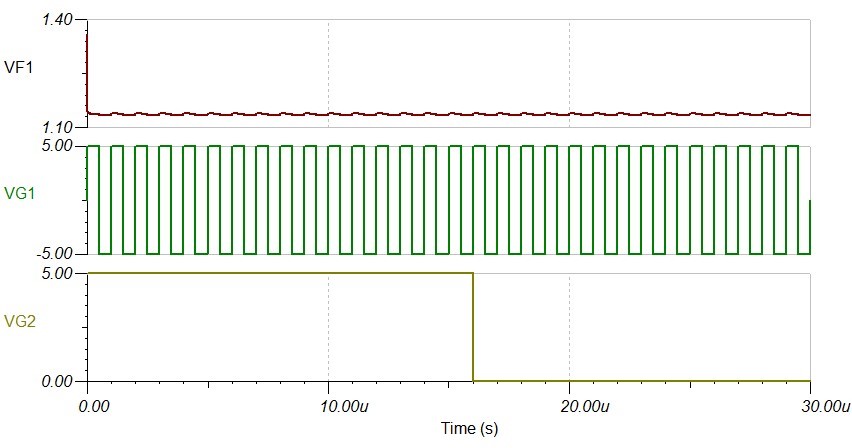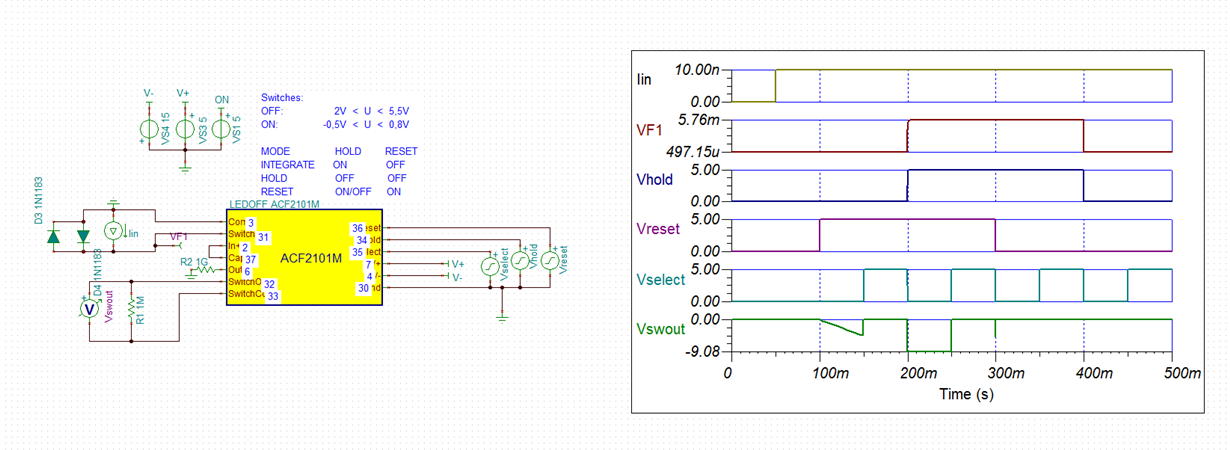Other Parts Discussed in Thread: TINA-TI, , TLE2426, TLE2425
Tool/software: TINA-TI or Spice Models
Greetings,
I'm trying to get an ACF2101 set up for integration of a voltage signal, although that's not the recommended use of the product.
Using TINA-TI, I've imported the ACF2101m model and began playing with it. For logistics reasons, it is easiest for me to set up the power supply of the op amp with a virtual ground at 10V, where +20V goes to the V+ pin, GND goes to the V- pin, and +10V goes to the GND pin. My intent was to use the TLE2426 for the virtual ground, however there is no such model in TINA-TI, just the TLE2425. Regardless, attached is my current schematic. Although my hold pin is set to high (5V), which should place the chip in integration mode, no such thing happens. The resistor R1 is chosen to provide 100uA which should lead to a short integration time according to the datasheet. Can anyone provide help? Attached is my SPICE model and relevant output. acf2101broken.TSC
acf2101broken.TSC


